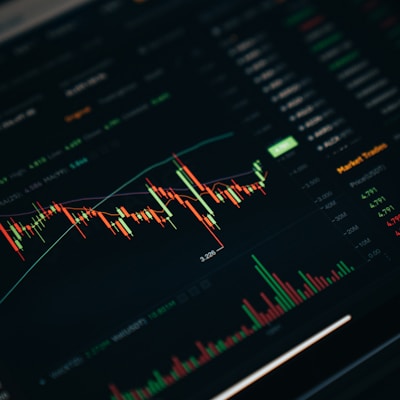Whoa! Ever tried to keep tabs on your DeFi moves on Solana and felt like you’re chasing shadows? Yeah, me too. The blockchain world is slick, fast, and sometimes, downright mysterious. You send tokens, stake them, swap here and there—and then you wanna peek under the hood to see what’s really going on. But where the hell do you start?
My gut said, «Just trust your wallet and the app interface.» But then I realized, nope—that’s like trusting a map without any street names. You need real-time, reliable data. Something that lets you monitor transactions, track addresses, and even grab info programmatically. And that’s where DeFi protocol tracking, API access, and address monitoring tools come into play.
Here’s the thing. Solana’s ecosystem is growing crazy fast, with new projects popping up daily. If you’re serious about managing your crypto hustle, you gotta keep a sharp eye on the pulse of your assets. Not just manually checking every now and then but having a system that alerts you, tracks suspicious activity, and paints a clear picture of your holdings and movements.
So, let’s unravel this a bit. Why does this matter? Because, honestly, without proper tracking, you’re flying blind. And in crypto, blind pilots don’t last long.
Okay, now that I got your attention, stick with me.
DeFi Protocol Tracking: Beyond the Dashboard
At first glance, you might think, “Isn’t my wallet app enough?” Seriously, it isn’t. Wallets show balances and recent transactions, sure—but they don’t give you the full story. DeFi protocols are complex beasts. They involve multiple smart contracts, pools, liquidity positions, and sometimes cross-chain moves. Tracking all this manually? Forget about it.
DeFi protocol tracking tools are designed to decode this chaos. They parse blockchain data to show you not only what happened but also what might happen next, based on trends and protocol rules. For example, imagine you’re farming yield on a Solana-based protocol. You want to know your current APR, your position’s health, and if any governance proposals affect your stake.
That’s when APIs become your new best friend. They provide programmatic access to blockchain data, letting you build custom dashboards, alerts, or analytics. Instead of clicking through pages, you automate the monitoring. My instinct told me this was overkill—but after I set up some API hooks, it was like having a personal crypto assistant.
Address monitoring is the cherry on top. You can flag your own wallet addresses or those of interest and get notifications about incoming or outgoing transactions. This is gold for security—imagine catching unauthorized token movement before it’s too late.
Honestly, it’s like having a radar system in a sea full of sharks. You gotta know where the danger and opportunity are.
The Power of solscan in Your Arsenal
Okay, I gotta be upfront: there are tons of blockchain explorers out there. But solscan really stands out for Solana users. It’s not just a pretty UI with transaction hashes—it’s a full-fledged monitoring hub.
What bugs me about some explorers is they feel like glorified block viewers. You get a transaction ID and some raw data. But solscan goes deeper. It offers detailed DeFi protocol insights, token swap histories, and even NFT tracking. Plus, their API is rock solid—super useful if you’re into building your own tools or bots.
And here’s a neat trick: you can create an account on solscan that lets you save wallets to monitor, set up alerts, and get personalized analytics. I tried it, and honestly, it changed the way I interact with Solana’s DeFi space. No more endless refreshing or guessing.
On one hand, it seems like just another explorer. But actually, it’s more like your personal blockchain detective—always on guard.
By the way, setting up your account is straightforward, and you can start tracking right away. No rocket science involved.
API Access: Building Your DeFi Command Center
Here’s where things get seriously nerdy—and fun. APIs let you pull data straight from the blockchain and use it however you want. That can be for a simple alert system, portfolio tracker, or even a risk management tool.
Initially, I thought, «Who needs this? The apps should do the job.» But after dabbling with solscan’s API, I was hooked. It’s like having a direct line to the blockchain’s heartbeat.
For example, say you’re farming in multiple pools. Jumping between apps is a pain, and you risk missing key updates. With API access, you can aggregate all your positions, monitor yield rates, and even automate withdrawals or reinvestments.
Plus, the API data can feed into your security setup. Imagine an alert if an unknown address suddenly interacts with your wallet or if a contract you’re involved with has a suspicious spike in activity. Yeah, it’s a bit like having a watchdog that never sleeps.
Of course, setting this up requires some technical chops. Not everyone’s gonna mess with raw JSON responses and endpoints. But if you’re the kind of person who likes to tinker, it’s absolutely worth it.
Address Monitoring: Your Eyes and Ears
Here’s something I can’t stress enough—monitoring addresses is more than just watching your own wallet. It’s about tracking counterparties, DeFi contracts, and even suspicious actors.
Address monitoring tools notify you immediately when activity happens. For instance, you might want to watch a multisig wallet you’re part of, or a project’s treasury address to see funding flows. Heck, you can even watch whale wallets or competitor addresses to spy on market moves.
At first, that sounded creepy. But it’s just smart diligence. Crypto is like the wild west; you don’t want to be the last one to know when something big is brewing.
Using solscan’s address monitoring, you get a neat dashboard that aggregates all your tracked addresses. You can customize alerts via email or even webhook integrations if you want to get fancy.
Really, it’s the difference between reacting late and staying ahead of the game.
Why DIY Tracking Beats Blind Trust
Here’s where I get a bit biased. I’m not a fan of blindly trusting third-party apps or wallets to keep you safe or informed. Too many times, I’ve seen glitches, delays, or just plain missing data.
Building your own system—using API access, protocol tracking, and address monitoring—gives you control. You’re not at the mercy of some app’s UI or their update schedule. Plus, you learn a hell of a lot more about how DeFi actually works.
Sure, it’s a bit more work upfront. But think of it as building your own cockpit in an airplane. You want all the gauges, warning lights, and controls that matter to you—not just a slick dashboard that looks pretty.
And yes, sometimes it feels overwhelming. There’s so much data, so many metrics. But once you get the hang of it, it’s empowering. It’s like going from a casual driver to a race car pilot.
Final Thoughts: Get Serious with Your Solana DeFi Game
So, what’s the takeaway? If you’re messing around with DeFi on Solana, you need more than just a wallet and hope. You need tools that offer deep visibility, fast alerts, and customizable data access.
Check this out—setting up your own tracking system with solscan as your base is a killer first step. It’s not just about seeing transactions; it’s about understanding them, predicting risks, and optimizing your moves.
And hey, I’m not saying this is the only way. But from where I stand, it’s the smartest way to keep your crypto life sane.
Anyway, if you’re still gauging whether to dive in, just start small. Create an account on solscan, bookmark your addresses, and play with their alert features. You’ll see how quickly you start feeling more in control.
At the end of the day, DeFi isn’t about blind faith. It’s about being sharp, informed, and ready for whatever the blockchain throws at you.

